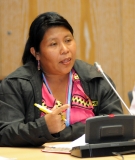The Kyoto Protocol's Clean Development Mechanism continues to be rocked by controversy. At a meeting on human rights in the CDM, two representatives for the Ngäbe-Buglé indigenous community in Panama gave a powerful account of the negative impacts of the CDM-supported Barro Blanco Dam.
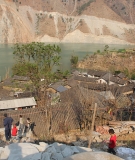
Date: Thursday, May 23, 2013 - 16:30
China plans to build and operate ten new dams on the Lancang River as part of its 12th Five Year Energy Plan. If all are built, more than 30,000 people will be relocated away from their ancestral lands.
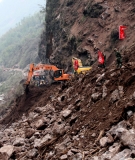
Date: Wednesday, May 1, 2013 - 17:38
Chinese geologist Fan Xiao links the recent Ya'an earthquake in China to the massive Wenchuan earthquake in 2008, which may have been induced by the filling of the Zipingpu reservoir. Now scientists warn that more earthquakes can be expected in this seismically active region, and that the government's large dams plans may contribute to these disasters.
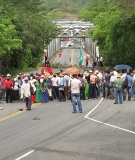
Date: Thursday, April 4, 2013 - 16:10
On March 22 – World Water Day – a Ngäbe-Bugle indigenous man named Onesimo Rodriguez was found murdered, his body left in a nearby stream, after attending a protest rally against the 28.84 MW Barro Blanco Hydroelectric Project in western Panama. Tensions have been mounting in recent years as the dam draws closer to completion, despite the unresolved issues around the dam's impacts and the poor stakeholder consultation processes led by the project's proponents.

Date: Wednesday, March 27, 2013 - 10:54
Photojournalist Rick Gerharter visited the Ngäbe-Buglé communities in Panama in February. His delegation documented their stories and the potential impacts of the Barro Blanco Dam, which if completed, would flood the lands and threaten the livelihoods of over 5,000 indigenous inhabitants. Last Friday, a member of the Ngobe community was murdered and one left seriously injured after a protest against the dam and its human rights violations.

Date: Tuesday, March 5, 2013 - 17:11
The Amur-Heilong River is one of the world's ten largest rivers. It is also one of the last free-flowing rivers left on the planet. While few have heard of it, the Amur has incredible global significance. It traverses a diverse range of forest, grassland and taiga ecosystems that support at least 2,800 plant and 500 animal species on the Russian side alone.
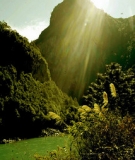
Date: Thursday, February 21, 2013 - 14:56
In 2003, a group of brave NGO activists, journalists and academics set out to protect one of Asia's last largely free-flowing river – the Nujiang (or the "Angry River," also known as the Salween) – from 13 planned dams. Dr. Yu Xiaogang, Goldman Prize winner and director of the Yunnan-based Green Watershed, was one of them.
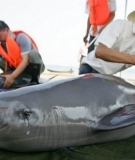
Date: Monday, January 14, 2013 - 13:20
After years of overfishing and rampant dam-building, a senior fisheries expert with the Chinese Academy of Sciences has spoken out against the ecological threats facing the Yangtze River by calling for a 10-year fishing moratorium and joining environmentalists in decrying the proposed Xiaonanhai Dam.
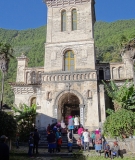
Date: Wednesday, November 28, 2012 - 16:24
Part 2 of our trip blog on the Lancang River dams explores the unresolved problems around resettlement, particularly for the Wunonglong Dam, which is currently under construction.
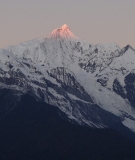
Date: Tuesday, November 27, 2012 - 14:48
In October, International Rivers paid a visit to several dam sites and affected villages on the Lancang (Upper Mekong) River in Yunnan, China. Read Part 1 of the two-part blog on what we found.
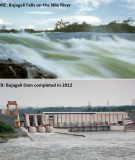
Date: Wednesday, November 21, 2012 - 15:09
In less than a week, world leaders, government negotiators, industry and civil society will converge on Doha, Qatar for COP18 to discuss how the global community can get ourselves out of the current climate mess. A new Stockholm Environment Institute (SEI) policy brief argues that the Clean Development Mechanism should not be one of those solutions.
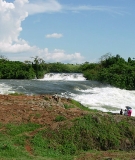
Date: Friday, September 21, 2012 - 13:00
The High-Level Panel for the Clean Development Mechanism presented its final recommendations on Sept 10. Despite an oversupply of credits and waning confidence in the CDM, the report presented an optimistic view of the CDM's future, while failing to recommend concrete solutions to address some of its fundamental flaws.
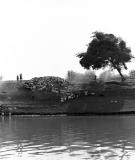
Date: Tuesday, September 18, 2012 - 17:49
The Gibe III Dam (now about half complete) is being built with Chinese support and financing. International Rivers released the story to our Chinese audiences to raise their awareness of the global footprint of their country’s dam builders and financial institutions. Meanwhile, Chinese audiences may see many similarities between the Ethiopian dam and development projects within China.
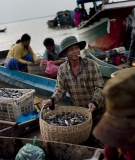
Date: Wednesday, August 29, 2012 - 15:04
The theme for this year’s World Water Week is Water and Food Security, which means that many – particularly within the dam industry – will be calling for more dams to provide water storage and energy. Dams, and particularly multi-purpose dams (which are meant to provide some combination of electricity, water supply and flood control), are “back in fashion”

Date: Wednesday, August 8, 2012 - 17:20
While scientists have known for decades that tropical reservoirs are a significant source of greenhouse gas emissions, new research from Washington State University-Vancouver has revealed that temperate reservoirs can produce a significant surge in emissions during certain times in their operation.

Date: Tuesday, July 24, 2012 - 12:17
Over a dozen World Heritage Sites threatened by planned or existing dams were reviewed at this year’s World Heritage Committee meeting, held in St. Petersburg, Russia. While the Committee’s decisions showed clear recognition of the threat that dam building poses to the natural and cultural heritage embodied by these sites, it failed to protect one of the most dam-threatened properties: Lake Turkana in Kenya.
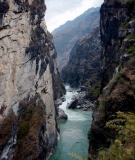
Date: Friday, July 6, 2012 - 15:00
As the last of the turbines at China’s Three Gorges Dam was connected to the grid on Wednesday, a dams debate rages over the fate of the Upper Yangtze River and its main western tributary, the Jinsha River.
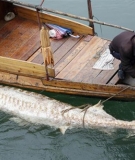
Date: Tuesday, July 3, 2012 - 12:30
China’s largest and the world’s third largest river, the Yangtze, is home to some of China's most important freshwater species. The Yangtze used to contribute to 70% of China’s freshwater catch annually. However, aggressive hydropower development has reduced the size and degraded the quality of this aquatic haven.

Date: Thursday, June 14, 2012 - 11:05
What started as an international effort to save Ramesses II’s Abu Simbel temple from the waters of the Aswan High Dam in Egypt – by relocating the temple piece by piece – is now a UN convention that seeks to prevent the destruction of precious cultural and natural heritage sites before it starts. 40 years later, local groups are closely monitoring the World Heritage Convention, and how far its stakeholders are willing to go to address serious threats to these sites like large dam development.

Date: Tuesday, May 29, 2012 - 17:40
Researchers argue that tropical reservoirs in Brazil are a "methane factory, continuously removing carbon from the atmosphere as carbon dioxide and returning it as methane, with a much greater impact on global warming."

Date: Tuesday, May 15, 2012 - 15:35
Scientists in China have discovered the world’s fifth species of snub-nosed monkey in the Nu River Valley. More widely known as the Myanmar Snub-nosed Monkey since it was first discovered in northeast Burma, this rare species has been dubbed the “Nu River snub-nosed monkey” in Chinese by scientists, who confirmed their relation to the Burmese species through a DNA analysis of their excrement collected near the Nu River in Yunnan province. However, only 300 individuals may be left. Among the threats to their habitats are poaching, logging, road construction, and other intrusive human activities. While nature reserves protect many of its natural habitats, they have not entirely dissuaded both public and private enterprises from developing in this fragile region.

Date: Monday, March 19, 2012 - 10:22
Children by the Salween River in Thailand, International Day of Action for Rivers 2012Hundreds of kilometers downstream from where I was this time last year, on this International Day of Action for Rivers it became clear to me that a major reason why communities in Burma and Thailand are opposed to dam building on the Salween River is because of their children.Half of those gathered on March 14 along the Salween's banks in a small village in Thailand were kids. Dressed in traditional attire, they danced and sang for an audience of over 200 villagers, artists, activists, journalists, and experts from Thailand, Burma and China. They lit candles that formed a river in the sand. They prayed with Buddhist monks. For me, the abstract phrase "rivers for the future" suddenly became grounded in real concerns: Where would the children go to school if they were displaced by the proposed Salween dams? What jobs could children fleeing the conflict spurred by these dams in Burma get if they lived undocumented in Thailand? Would they have land to farm and fish to catch? What is truly lost when they lose their ties to their birthplace?
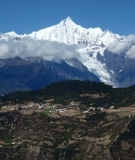
Date: Thursday, February 16, 2012 - 15:36
Mount Kawagebohttp://nomadchina.wordpress.comMount Kawagebo (or Kawagarbo) rises 6,740 meters above sea level – the tallest peak in Yunnan Province, China. Its eastern side is part of the Three Parallel Rivers of Yunnan Protected Area UNESCO World Heritage Site (whose rivers – the Nu, Lancang, and Jinsha – are under threat by a number of proposed dam and mining projects). It is one of the most sacred mountains in Tibetan Buddhism and is visited by 20,000 pilgrims each year. To the local people, who also act as stewards of the sacred mountain, any destruction of the mountain body is unthinkable.

Date: Thursday, February 2, 2012 - 12:50
The Clean Development Mechanism (CDM) is meant to catalyze climate-friendly and sustainable projects in low-income countries. Instead, it's provided massive subsidies to hydropower developers while increasing greenhouse gas emissions. Through deception and abuse of the system, at least two-thirds of all CDM projects are likely not additional, and more are slipping in each year. In an attempt to cure its ills during the second commitment period of the Kyoto Protocol, the CDM Executive Board has initiated a year-long policy dialogue. Having failed to reach any decisions about reform at Durban, the CDM policy panel members will examine unresolved issues ranging from stronger rules for public participation to an appeals procedure. Of particular concern to the global movement for rivers is ensuring that the CDM imposes greater limitations on large hydropower projects, which are more likely to create enormous environmental and social problems for local communities than smaller community-driven decentralized projects.

Date: Thursday, December 22, 2011 - 16:58
EU demonstrationknowledge.allianz.comDurban is over, the delegates have all either gone home or are enjoying the sunny South African weather, and serious actions to curb rising emissions have again been shunted down the road. (You can read more about the results at Durban on our colleague Payal Parekh's blog.) However, progress is being made on the Clean Development Mechanism (CDM) – albeit slowly – to address some of its most serious flaws, including how to deal with non-additional, "hot air" projects in the world's largest emissions trading scheme, the European Emissions Trading Scheme (EU ETS).
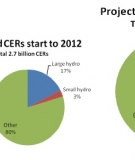
Date: Tuesday, November 29, 2011 - 16:32
Increase of credits from large hydro expected by 2020A new study released in time for the climate negotiations in Durban confirms that over 20% of all carbon credits under the UN's offsetting scheme, the Clean Development Mechanism (CDM), could come from business-as-usual large hydropower projects. This is not surprising considering that hydropower is heavily supported and subsidized in many countries, especially in China and India, who host a combined 78% of all the registered hydropower projects in the CDM. Large hydro projects are projected to generate 2 billion
carbon credits by 2020, which could be a lot of hot air.

Date: Wednesday, October 26, 2011 - 14:45
Nam Leuk Reservoir, an ADB-funded projectChina International Water & Electricity CorpOne of the first reservoir emissions studies ever to be conducted in Southeast Asia has just been published, and the results may be a wake-up call to dam builders trying to win carbon credits for hydropower projects in Southeast Asia. The international team of researchers spent two years measuring the greenhouse gas emissions from two sub-tropical reservoirs in Laos, the Nam Ngum and the Nam Leuk reservoirs (the latter of which diverts water from the Nam Leuk River to the Nam Ngum Reservoir). What they found was that at Nam Leuk, "GHG emissions are still significant 10 years after impoundment" and that the emissions values were comparable to other tropical reservoirs. The annual carbon export (including both diffusion into the atmosphere from the reservoir and from downstream) amounted to about 2.2 ±1.0 gigagrams of carbon per year. While much less than a coal-fired power plant, this is still roughly equal to the emissions from the electricity use of over a thousand US homes, which is far from insignificant.

Date: Wednesday, October 19, 2011 - 14:20
Gaming the environmentFriends of the EarthAs Wall Street and the EU continue to reel under the crisis brought on by the financial deregulation of global markets, a recent report on the EU's carbon market shows just how far these (mal)practices have spread. "Letting the market play: corporate lobbying and the financial regulation of EU carbon trading," co-produced by Carbon Trade Watch and Corporate Europe Observatory, reveals how under-regulation in a market mechanism meant to reduce global carbon emissions led to fraud and over-speculation. The EU is currently changing its rules in response, but corporate lobbies continue to try to influence this process. Ultimately, the author Oscar Reyes concludes that such reforms are bound to fall short, since
they attempt to "regulate the unregulatable."

Date: Tuesday, September 20, 2011 - 11:49
A recent WikiLeaks cable from the US Consulate in Mumbai provides irrefutable evidence that carbon credits generated by Indian projects and sold to European countries under the Clean Development Mechanism (CDM) are a lot of hot air. It reports on a seminar in 2008 with the US Consulate General Office, analysts from the Government Accountability Office (which later released a critical report on offsets), and the executives of top Indian companies. The cable notes that these companies "conceded that no Indian project could meet the 'additionality in investment criteria' to be eligible for carbon credits."

Date: Tuesday, September 6, 2011 - 15:13
Desiree Tullos explaining the IDAM at the Woodrow Wilson CenterCatching
the tail end of the DC heat wave at the end of July, I attended two
events hosted by the China Environment Forum at the Woodrow Wilson Center. Both events included a presentation and demonstration of the IDAM, or the Integrative Dam Assessment Modeling tool, and its application in southwest China.


